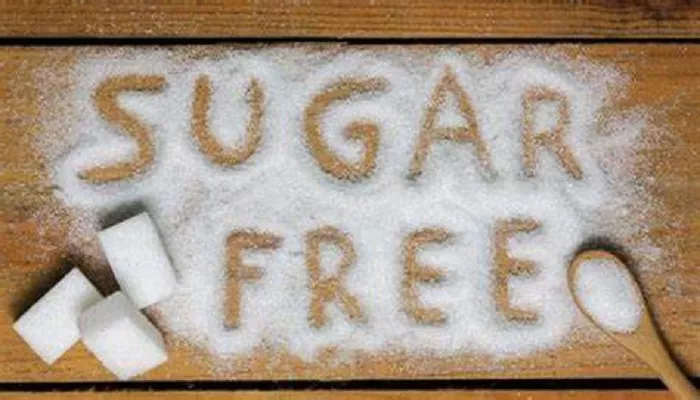Artificial sweeteners are food additives that mainly provide sweetness with few or no calories. However, the carbohydrate, fat content, and total energy of sugar-free foods, especially starchy items like bread and pastries, are often quite high.
Sugar-free compressed biscuits, sugar-free low-fat oats, sugar-free low-calorie vitamin beverage powder, sugar-free, fat-free, and calorie sparkling water, sugar-free snacks for diabetics… Sugar-free foods, which seem to have a health halo, are becoming more and more popular among the public and are favored by many health-conscious people. With promotional slogans like “Zero sugar is healthier” and claims of being used in the nutrition departments of large tertiary hospitals, the sugar-free food market has been booming. But are sugar-free foods truly healthy?
To answer this question, we first need to clarify what sugar-free food is.
Xue Changyong, the former director of the Nutrition Department of the General Hospital of the People’s Liberation Army, explained that in a broad sense, sugar generally refers to digestible carbohydrates. Narrowly, sugar mainly means refined sugar, such as sucrose. Strictly speaking, only foods with no carbohydrates can be called sugar-free. But in reality, most sugar-free foods on the market, like sugar-free pastries, mooncakes, and zongzi, just don’t contain sucrose. Under this concept, merchants can add other sugars like fructose and artificial sweeteners. In Xue Changyong’s view, sugar-free food isn’t truly sugar-free. Most sugar-free foods on the market refer to those without refined sugar.
In fact, there are no clear domestic regulations defining sugar-free food. However, in the “General Rules for Nutrition Labels on Prepackaged Foods”, the critical limit for sugar (lactose) for “0 sugar” or “sugar-free” is set. It means that the sugar content in every 100 grams or 100 milliliters of food should not exceed 0.5 grams. He Li, a researcher at the Institute of Nutrition and Health of the Chinese Center for Disease Control and Prevention, further elaborated: “According to the ‘General Rules for Nutrition Labels of Prepackaged Foods’, if the sugar content in every 100 grams or 100 milliliters of food is less than or equal to 0.5 grams, it can be considered sugar-free. And if the total energy content is less than 17 kilojoules (about 4 kilocalories), it can be called calorie-free.” In other words, “0 sugar” or “0 calorie” foods don’t have absolute zero values. Their sugar or calorie contents are just very low and can be negligible.
It’s important to note that in recent years, with consumption upgrades and the spread of health concepts, sugar substitute derivatives, like sugar-free foods, are also winning the hearts of many consumers. So, what are sugar substitute foods, and how are they different from sugar-free foods?
Sugar-free foods solve the taste problem, but they still contain energy. For example, sugar-free steamed buns mainly consist of carbohydrates. Lu Juming, a chief physician and professor in the Endocrinology Department of the General Hospital of the People’s Liberation Army, said directly, “What is an artificial sweetener? It’s an ingredient that replaces sugar, which has a sweet taste but isn’t refined sugar.”
He Li reminded that although sugar substitutes such as xylitol, maltitol, stevioside, and mogroside mainly provide sweetness and have few or no calories as food additives, the carbohydrate, fat, and total energy content of sugar-free foods, especially starchy products like bread and pastries, are relatively high.
Xue Changyong said, “Artificial sweeteners don’t cause blood sugar to rise. They have a sweet taste and no calories.” Many current products like 0-sugar, 0-calorie, and 0-fat sparkling water are mainly made up of water and sweeteners. Although these sweeteners have been approved by relevant departments and are relatively safe, it’s still not advisable to consume them in large amounts because they have little nutritional value.
Even sugar-free foods shouldn’t be eaten in large quantities. If the total amount of carbohydrates exceeds the limit, it’s still harmful to health. Regarding the healthiness of sugar-free foods, Lu Juming used sugar-free steamed buns as an example. He said that in terms of blood sugar, sugar-free steamed buns can raise blood sugar just like regular steamed buns. Especially for diabetic patients, they shouldn’t overeat them just because they are “sugar-free”.
For healthy sugar reduction, Xue Changyong suggested that people trying to cut down on sugar should consider the glycemic index and glycemic load when choosing foods. The glycemic index reflects how the sugar content in food affects blood sugar, and the glycemic load is the product of the food’s weight and its glycemic index. When it comes to food intake, relatively more low-glycemic-index foods that have little impact on blood sugar can be consumed, regardless of the food’s composition.
Related topics


